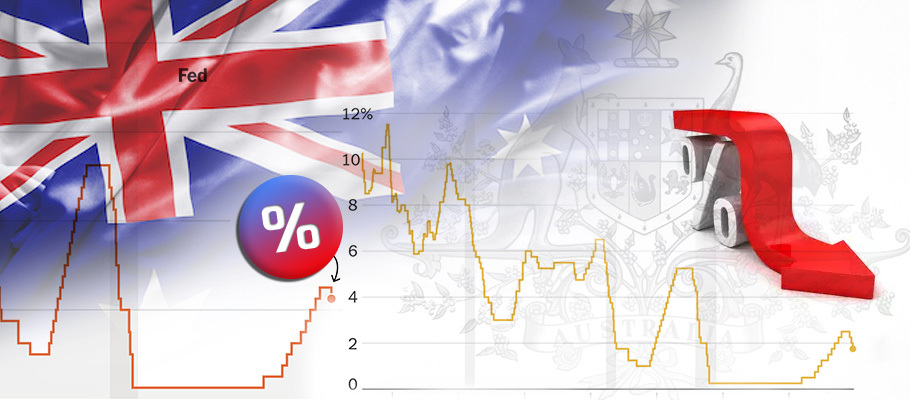
Published: March 9th, 2020
– Australia is emerging from one of the most catastrophic bushfires that took more than 240 days to quell. With more than 30 million acres of land burnt, some 3000 homes destroyed and about 30 people dead, not many were expecting any good news from Down Under any time soon. Until the Q4 of 2019 GDP data checked in. Now, with better-than-expected stats, the Australian dollar has surged.
The Australian dollar recorded impressive gains on Wednesday following the release of the GDP data for Q4 of 2019, which surpassed expectations. The figures tip the Australian currency to maintain an upward trajectory, especially now that interest rate differentials do not look to be much of a burden.
The currency performed impressively against the Great Britain Pound in particular. The surge is also associated with the decision by the Reserve Bank of Australia (RBA) to cut the base rate by 25 basis points to 0.50%, a record low. The cut is also the cause of the bearable rate differentials.
The Australian dollar on Wednesday towered above all major currencies because of the surge. The good performance was occasioned by the impressive progress recorded in the Australian economy. The Q4 of 2019 report indicates a growth rate of 0.5%, and though this figure represents a drop of 0.1% from the 0.6% recorded in Q3, it was well above expectations.
The market had predicted that the Australian economy would grow by just 0.3% because of the many problems the country faced. First, the wild bushfires that went on for almost 250 days and that killed some 30 people, destroying 3,000homes in its wake worked against any meaningful growth. Second, the effect of coronavirus is already being felt in the economies of many countries. Besides, it already is threatening to slow down the strides that global commerce has attained in the past several months.
According to the Australian Bureau of Statistics, the gross domestic product leaped by 0.5%, beating the consensus forecast by 0.2%. Q3 results were also revised up from 0.4% to 0.6%. The annualized growth stood at 2.2%, which is 0.2% more than the market expectations. Besides, it was 0.5% more than the rate of growth of the previous quarter, which was 1.7%.
These figures, however, are a reflection of the Australian economy before you factor in the ravaging impacts of coronavirus. If the outbreak is not contained soon, then the stats for Q1 of 2020 may dive and the gains so far recorded, wiped out.
While the AUD climbed for most of last week going into the weekend, the GBP was on a downward spiral. The currency attracted significant losses after fears erupted of a no-deal Brexit following flaring tensions between the U.K. and the EU. The U.K. wants a free trade deal which the EU can only agree to if the U.K. conforms to the EU laws after Brexit. This is a prospect that the U.K. does not want to entertain. Both AUD and GBP Looking to Get out of the Doldrums
The Australian dollar, however, took a worse beating and significantly lost support because of the elevated fears of the outbreak of coronavirus.
The Chinese economy started coming to terms with near-term impacts of a significantly reduced workforce as well as the restrictions of travel into, out of, and inside China. As such, the market sentiments dropped. The Australian dollar fell as a result because it is deeply connected to the risk and trade with the Red Dragon.
Looking ahead, however, the Australian dollar will probably witness a further surge coming on the backdrop of the GDP data. Besides, the U.S. Federal Reserve announced a 50 basis points rate cut ahead of schedule, which the AUD is expected to capitalize on just as it made the most of the Reserve Bank of Australia’s decision to slash the base rate from 0.75% to 0.5% on Tuesday.
The market noted that Australia’s current budget surpluses and account excesses may make the currency resilient. It, as such, is likely to endure the harsh conditions that will hit the global economy in the wake of the coronavirus pandemic.
Already, the AUD is trudging a successful path. By Friday, it had managed three consecutive days of impressive gains. At the close of business, the currency had lost mildly, moving from its intra-day high of $0.6624 to settle at $0.6610. The slight downturn was a result of the dismal Australian Retail Sales data that was released on Friday.
The GBP, too, is hoping to make a comeback. Its prospects of doing so, however, especially on the backdrop of the Brexit confusion, do not look great.
The retail sales for January dropped below 0.0% to stand at -0.3%. This figure, however, is still above -0.5% prediction the market had earlier given. The sales figures are not an isolated case. The AiG Performance of Services Index, a representation of the business environment in the Australian service sector as highlighted by the Australian Industry Group was also down to 47.4 points.
The Performance of Construction Index according to the Housing Industry Association of Australia dived as well. The figures dropped from 41.3 in January to 42.7 in February. A reading below 50.0 indicates that the industry is shrinking.
However, the figures indicate that the rate of contraction is slowing.
The Australian dollar recorded impressive gains rising from a one-year low. The rise came amid equally pleasing GDP data for Q4 of 2019 that showed the economy had grown by 0.5%. This figure was 0.2% above the market predictions and coming on the backdrop of the scalding bushfires that have burnt the vast majority of New South Wales, the growth is welcome. Though the currency is towering over the GBP, the English currency is expected to make a comeback. The prospects of that happening, however, are momentarily dim. It will be interesting to see what the next few days bring.